Impact of keratocyte differentiation on corneal opacity resolution and visual function recovery in male rats
- PMID: 38862465
- PMCID: PMC11166667
- DOI: 10.1038/s41467-024-49008-3
Impact of keratocyte differentiation on corneal opacity resolution and visual function recovery in male rats
Abstract
Intrastromal cell therapy utilizing quiescent corneal stromal keratocytes (qCSKs) from human donor corneas emerges as a promising treatment for corneal opacities, aiming to overcome limitations of traditional surgeries by reducing procedural complexity and donor dependency. This investigation demonstrates the therapeutic efficacy of qCSKs in a male rat model of corneal stromal opacity, underscoring the significance of cell-delivery quality and keratocyte differentiation in mediating corneal opacity resolution and visual function recovery. Quiescent CSKs-treated rats display improvements in escape latency and efficiency compared to wounded, non-treated rats in a Morris water maze, demonstrating improved visual acuity, while stromal fibroblasts-treated rats do not. Advanced imaging, including multiphoton microscopy, small-angle X-ray scattering, and transmission electron microscopy, revealed that qCSK therapy replicates the native cornea's collagen fibril morphometry, matrix order, and ultrastructural architecture. These findings, supported by the expression of keratan sulfate proteoglycans, validate qCSKs as a potential therapeutic solution for corneal opacities.
© 2024. The Author(s).
Conflict of interest statement
The authors declare no competing interests.
Figures

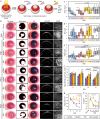
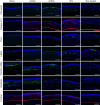
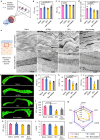
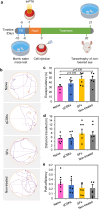
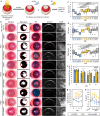

Similar articles
-
Ultrastructural Aspects of Corneal Functional Recovery in Rats Following Intrastromal Keratocyte Injection.Invest Ophthalmol Vis Sci. 2025 Feb 3;66(2):45. doi: 10.1167/iovs.66.2.45. Invest Ophthalmol Vis Sci. 2025. PMID: 39964324 Free PMC article.
-
Safety and Feasibility of Intrastromal Injection of Cultivated Human Corneal Stromal Keratocytes as Cell-Based Therapy for Corneal Opacities.Invest Ophthalmol Vis Sci. 2018 Jul 2;59(8):3340-3354. doi: 10.1167/iovs.17-23575. Invest Ophthalmol Vis Sci. 2018. PMID: 30025076
-
The corneal fibrosis response to epithelial-stromal injury.Exp Eye Res. 2016 Jan;142:110-8. doi: 10.1016/j.exer.2014.09.012. Exp Eye Res. 2016. PMID: 26675407 Free PMC article. Review.
-
Embryoid body-based differentiation of human-induced pluripotent stem cells into cells with a corneal stromal keratocyte phenotype.BMJ Open Ophthalmol. 2024 Nov 28;9(1):e001828. doi: 10.1136/bmjophth-2024-001828. BMJ Open Ophthalmol. 2024. PMID: 39613390 Free PMC article.
-
The use of X-ray scattering techniques to quantify the orientation and distribution of collagen in the corneal stroma.Prog Retin Eye Res. 2009 Sep;28(5):369-92. doi: 10.1016/j.preteyeres.2009.06.005. Epub 2009 Jul 3. Prog Retin Eye Res. 2009. PMID: 19577657 Review.
Cited by
-
Biomedical Application of MSCs in Corneal Regeneration and Repair.Int J Mol Sci. 2025 Jan 15;26(2):695. doi: 10.3390/ijms26020695. Int J Mol Sci. 2025. PMID: 39859409 Free PMC article. Review.
-
Ultrastructural Aspects of Corneal Functional Recovery in Rats Following Intrastromal Keratocyte Injection.Invest Ophthalmol Vis Sci. 2025 Feb 3;66(2):45. doi: 10.1167/iovs.66.2.45. Invest Ophthalmol Vis Sci. 2025. PMID: 39964324 Free PMC article.
-
Efficient Fabrication of Human Corneal Stromal Cell Spheroids and Promoting Cell Stemness Based on 3D-Printed Derived PDMS Microwell Platform.Biomolecules. 2025 Mar 19;15(3):438. doi: 10.3390/biom15030438. Biomolecules. 2025. PMID: 40149974 Free PMC article.
References
MeSH terms
Grants and funding
LinkOut - more resources
Full Text Sources

